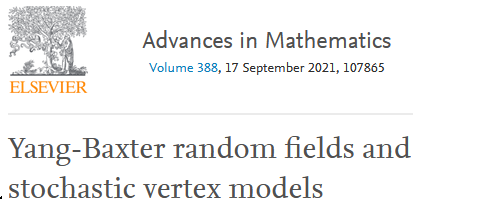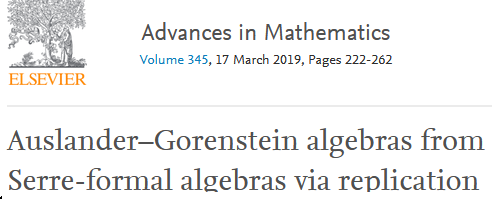Type-setting: The use of hyphens and en-dashes
From "The TeX-Book" (Knuth) and "The Joy of TeX" (Spivak):
Hyphens are used for compound words like "daughter-in-law" and "X-rated". En-dashes are
used for number ranges like "pages 13--14", and also in contexts like "exercise 1.2.6--52".
(The TeX-Book, p.4)
En-dashes are used for number ranges, like "pages 13--34", and also in contexts like "Fig. A--12".
(Joy of TeX, p.8).
The AMS-proposal
It seems that it was common practive to use a hyphen for dealing with pairs of names
(like Auslander-Reiten),
but then the problem arose: what to do, when one of the names involved uses already
a hyphen. The publishers of the AMS suggested in this special situation to use an en-dash
for the combination of names, and to use this rule then throughout the paper.
TeX - stack exchange
For a long discussions about the problem see
tex.stackexchange.com.
Here, the use of an en-dash for pairs of names is rated as a suggestion of some
typographers with the addition:
"(i.e. they consider it a possible way to do things, not a compulsory one)"
Clear rules:
- you should use a longer sign when the link between the two elements of the phrase is weaker,
and a shorter one when they are very much related.
-
Important is the uniformity all along a document.
Conclusion
The compound rule means to write
Auslander-Reiten--quiver, but definitely not Auslander--Reiten-quiver.
The problem
This is the problem: There are three levels of compounds:
- Double names: e.g. Swinnerton-Dyer.
- Names of different authors: e.g. Aulander-Reiten.
- The combination of names with an object: e.g. Serre-formal
but there are only two typographical means: the hyphen (-) and the en-dash (--).
Two examples from Advances in Mathematics
| hyphen for "Yang-Baxter" (good)
| | 
|
|
en-dash for "Auslander-Gorenstein",
hyphen for "Serre-formal"
|
| 
|
| Comment: This is really strange. How would they typeset "XXX-formal", if the concept
of formality would have been introduced not by Serre, but by Auslander-Gorenstein: as
"Auslander--Reiten-formal"?
|
There are not many journals where the TeX-files of the articles
are available. One is JIS. There is the paper 20.6.7 entitled
"Explicit Asymptotics for Signed Binomial Sums and Applications to
the Carnevale-Voll Conjecture",
see JIS-20.6.7
Here is the TeX-Code for the title:
{\LARGE\bf Explicit Asymptotics for Signed Binomial\\
\vskip .01in
Sums and Applications to the Carnevale-Voll
\vskip .10in
Conjecture}
(Similarly, see "Thue-Morse Sequence" in Article 20.8.2)
Outside of the math community
See for example fonts.com (Keyword: Hyphens, En-dashes and Em-dashes, by Ilene Strizve):
A hyphen is the shortest in length of the three. It is used
... to connect parts of compound words such as go-between, ill-fated...
The en-dash, which is shorter than an em-dash and longer than a hyphen,
is used to indicate a range of values, such as a span of time or numerical quantities
(similar to using the words "to" and "from").
Examples: 5:30 -- 6:00 pm, Monday--Friday, 1984--2002.
Or see: grammerly blog
(Keyword: En Dash, by Catherine Traffis):
Using an En Dash with Complex Compound Adjectives:
An en dash should be used for clarity when one of the elements
in a compound adjective is an open compound (made up of two words
with a space between them) or when both elements contain hyphenated terms.
Examples: Ming Dynasty-style furniture, World War I-era

